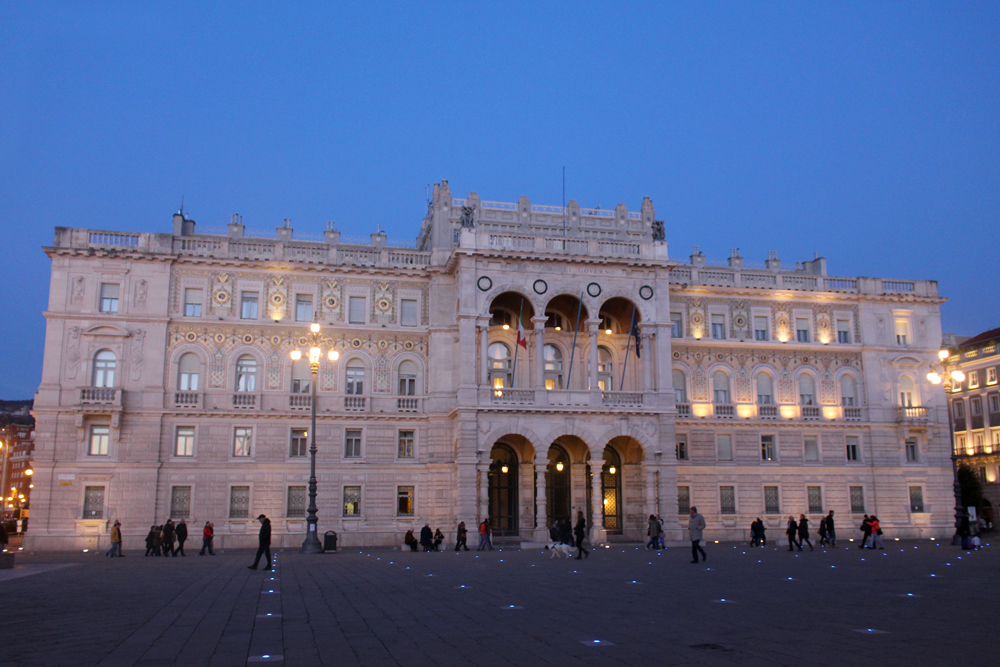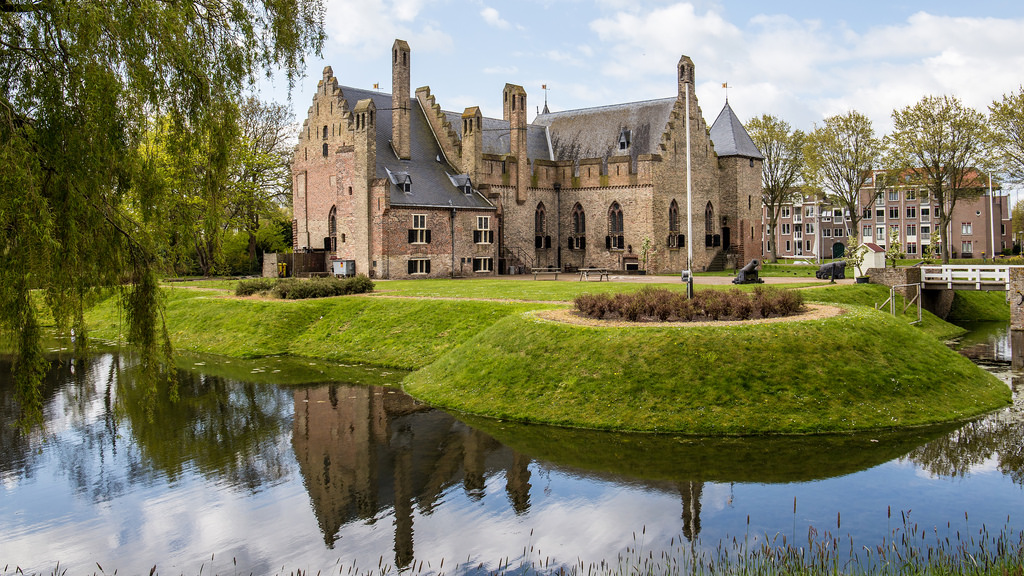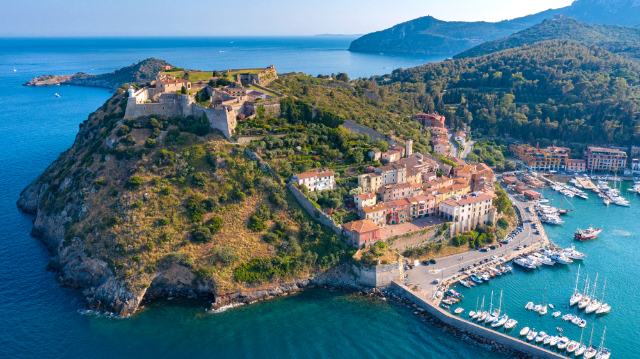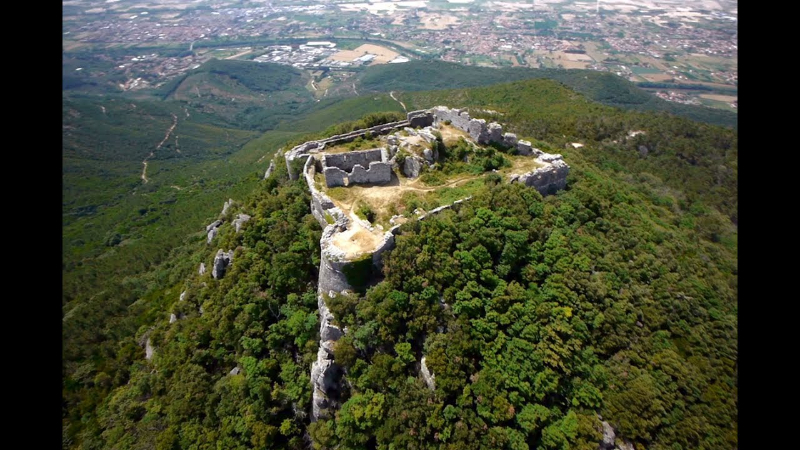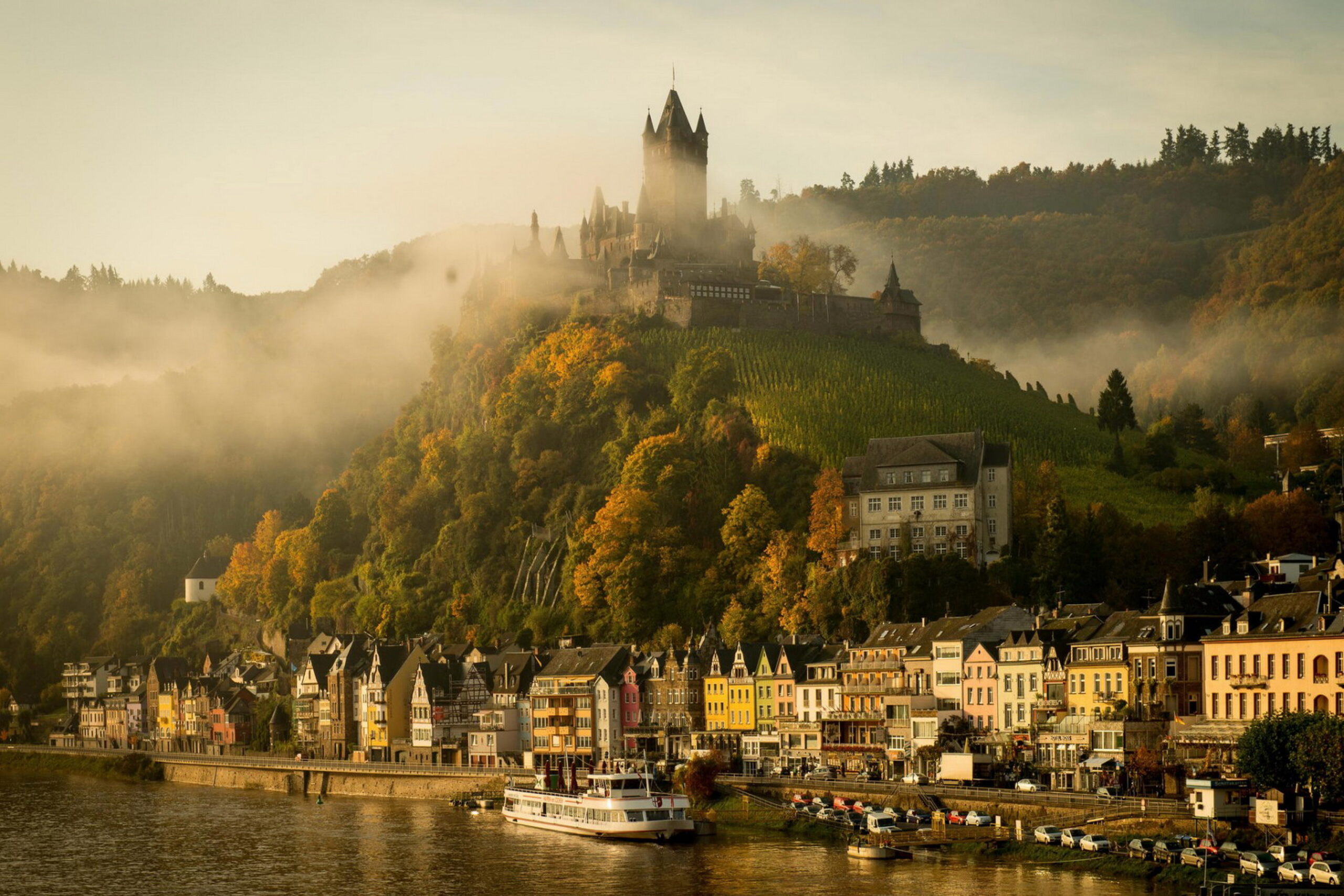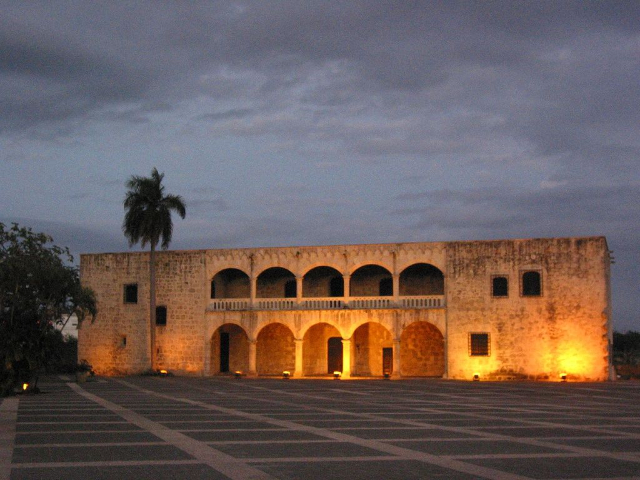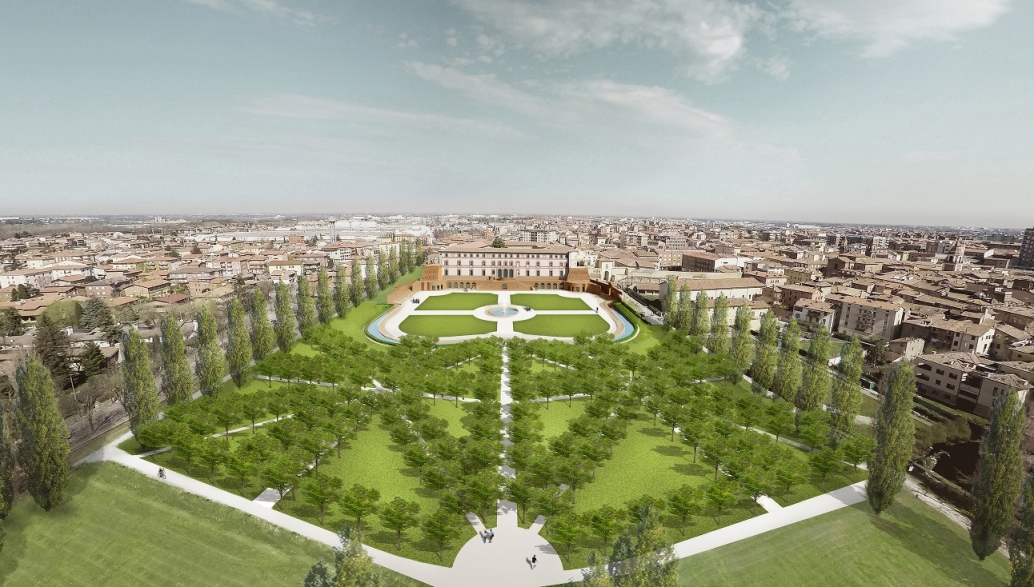The palace is in Jugendstil (Germanic variant of French Art Nouveau or English Art Nouveau imposed in reaction to the raging Biedermeier style). Built between 1904 and 1905 by Viennese architect Emile Artman in place of a modest 18th-century palace. It is the Government Palace that was first the seat of the Autrian Lieutenancy and today houses the Prefecture. On the main facade the coats of arms of Austria (double-headed eagle) have been changed to those of the Savoy family (shield with white cross on a red background), while on the side facades the originals have been left. The mosaics are made of Murano glass. The mosaics on the facades were made in Innsbruck to the design of the Viennese Giuseppe Straka and depict ornamental and figured motifs. On two levels allegorical male and female heads of practical and intellectual activities are repeated;
In 1764, at the behest of Empress Maria Theresa of Austria, the palace of the Captain-Lieutenant was built on the basement basin of the Mandracchio. Demolished in 1899, on the same site stands the present Government Palace, built between 1901 and 1905 to the design of Viennese architect Emil Artmann, which, like many of the buildings in Trieste built near the sea, rests on a 160-cm-thick platform supported by 3,000 concrete piles in order to counteract the instability of the subsoil.
Of quadrangular plan with a central courtyard, it has externally a horizontal facade partition consisting of an ashlar basement in white stone up to the second floor level, an upper band covered with mosaic decoration, and the stone balustrade of the roof terrace. On the main façade there is a loggia with two superimposed levels divided into three archivolted bays, supported at the bottom by columns and pilasters repeating the ashlar motif of the first level of the building and at the top by plain columns with Ionic capitals. On the balustrade of the terrace above the loggia are groups of cherubs of allegorical significance. Stylistically, the building is inspired partly by Renaissance architecture and partly by the Viennese Sezession style.
